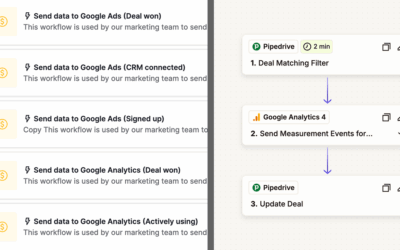Marketing and martech move fast. One minute everyone’s obsessing over TikTok strategies, the next it’s AI-generated everything. It’s easy to get distracted by shiny new tools and trends, but the fundamentals still matter — probably more than ever.
This is a rewrite of a post from 2019. Some of the content has changed but the aim is the same: to help marketers focus on what actually works, rather than chasing every hot new platform or plugin.
Here’s what I recommend focusing on in 2025 and beyond.
1. Look for growth tactics and “hacks”, but don’t compromise on user experience
Sure, growth hacks can deliver quick results. But short-term wins can cost you long-term trust. Nobody likes intrusive popups, manipulative CTAs, or “surprise” newsletter signups.
At Outfunnel, we’ve tested plenty of list-building tactics — and killed off the ones that annoyed our audience.
We added a scroll-triggered email collector to posts on our website some time ago. Only after implementation did we learn that it’s a “dumb” lead form. If you added your email and came back the next day, we still asked you for your email address. (Yikes!)
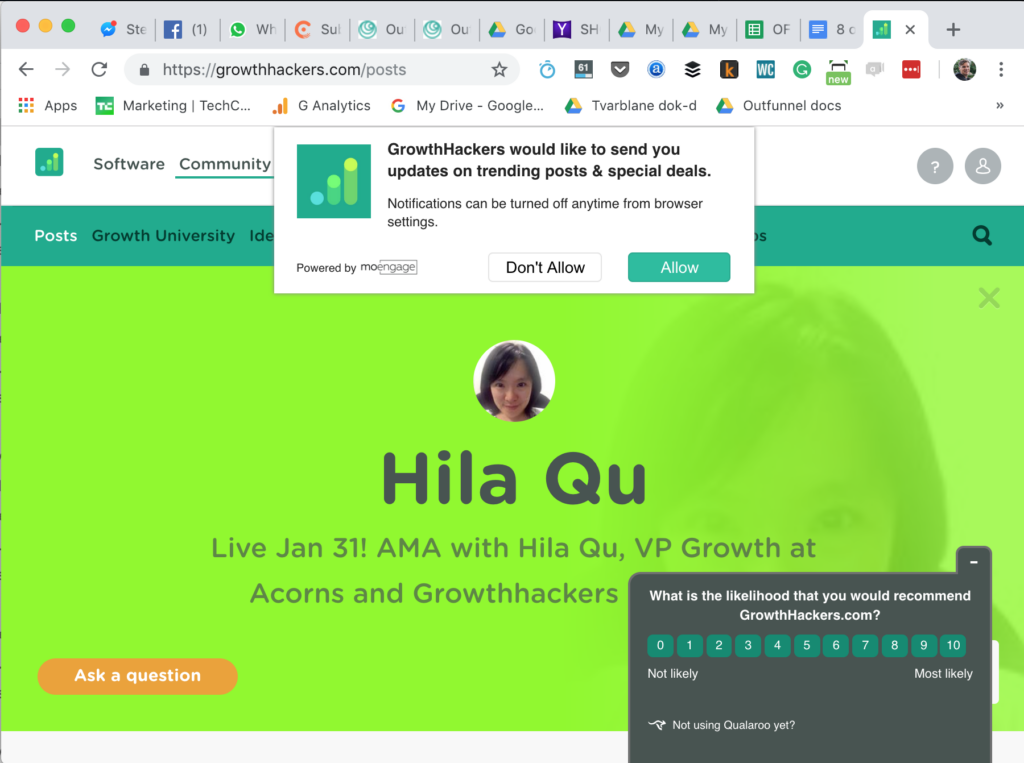
Smart marketing isn’t just about growth — it’s about respect.
2. Use tools that buy you back time
Time is your most precious marketing resource. If a tool saves you even an hour a week, that adds up fast.
For example, we use Outfunnel to sync CRM and email lists automatically (it’d be weird if we didn’t). That means no more importing-exporting CSV files to keep our lead and customer lists up-to-date.
A good rule of thumb: if a tool costs less than your hourly rate and saves you even just one hour per month, it’s probably worth it.

Pro tip: Look for automation opportunities hiding in plain sight — syncing contacts, cleaning lists, reporting workflows, etc.
Here’s another example: I was unpleasantly surprised when the social media tool Buffer announced that they’d discontinue their weekly statistics email. For me it had been a great way to learn which tweets had gotten good engagement, and which ones had flopped. Now I’d have to log in to the tool and navigate to the analytics view of two different Twitter accounts. Soon after that announcement, we cancelled our account.
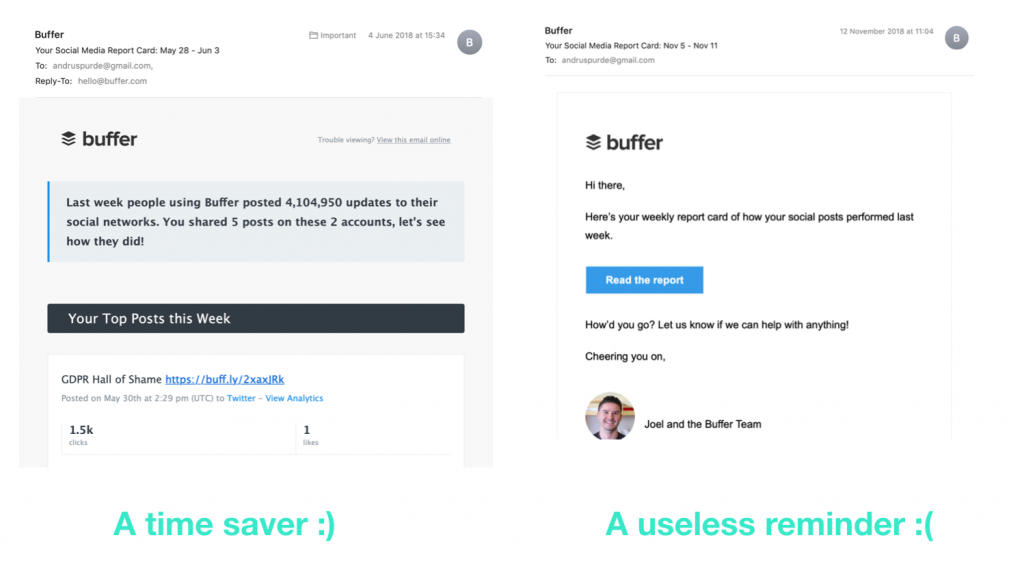
3. Don’t just pick tools based on features — understand their DNA
All email tools might look the same on a features page. But the product’s DNA tells a different story.
Let’s look at CRMs, for example. Pipedrive was built for pipeline management, Copper for tight integration with the Google Workspace, HubSpot for taking the company multi-product. (Related: we’ve done a Pipedrive vs HubSpot comparison). So don’t just compare templates or pricing — dig into the company’s mission, blog content, and customer stories.
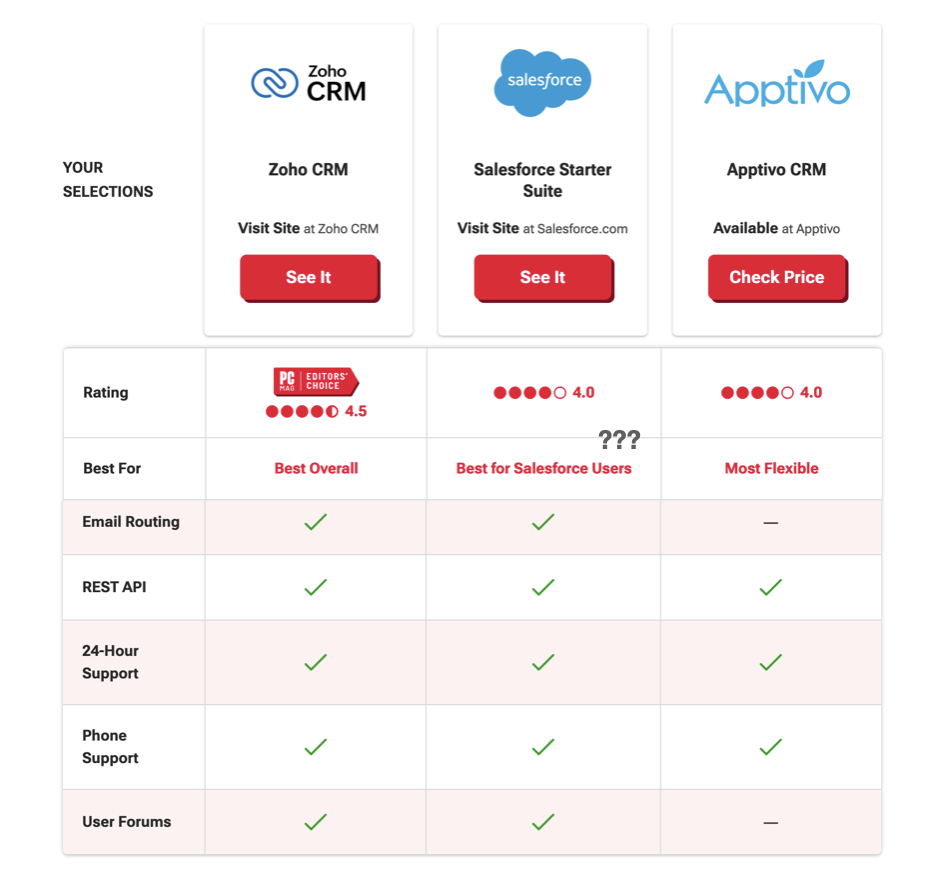
But in a typical vendor comparison matrix, all tools appear to do very similar things.
When comparing tools, ask: are they solving problems similar to yours? Do they care about the same stuff? That’s what matters.
4. When doing outbound, invest in targeting and copy.
Outbound just works, so it should probably be in everyone’s “toolbox”.
Alas, because generating cold emails is easier than ever, all of our inboxes are overloading with outreach messages.
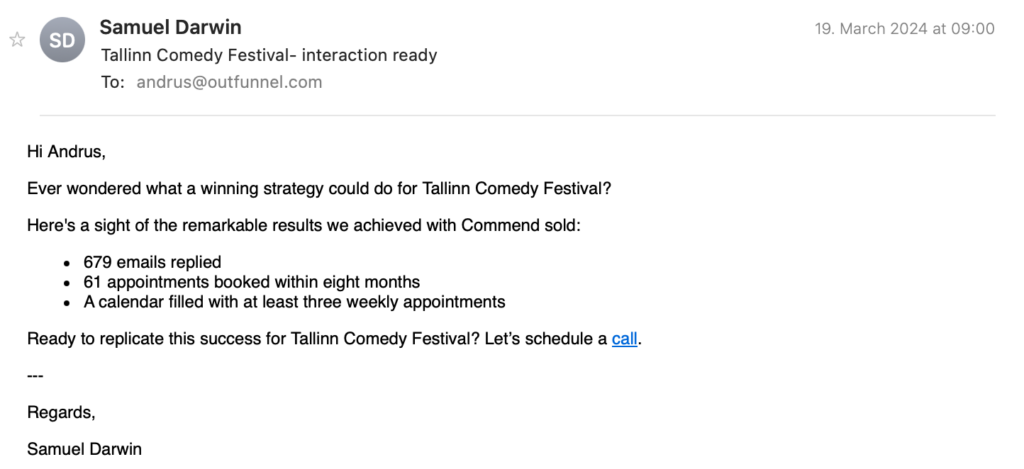
It’s so easy to set up a dozen burner domains for cold email, and there are hundreds of AI-powered tools that don’t care about your results or how much annoyance the avalanche of emails causes.
Luckily, some modern tools like Amplemarker, Sera, and others have rapidly improving targeting options based on relevant signals such as mentioning your competitor in a negative light in a review, or participating in relevant Slack groups (in addition to basics like social media activity). I predict that companies that over-invest in targeting will win big.

Also, don’t go with the first version that your AI tool outputs, and really invest in writing.
Every email you send should earn its place in someone’s inbox. Write like a human. Be clear. Edit mercilessly. Pay a real human copywriter. Test, then test again. (And don’t forget to spell check)
5. Double down on AI — but don’t outsource your voice
Yes, AI can help you move faster. No, it shouldn’t replace your brain.
Use AI to help you:
- Create and repurpose content of all kinds
- Summarize call transcripts or CRM notes
- Build segments based on behavior
But don’t rely on it for originality, insight, or emotional connection. Your voice, your values, and your customer understanding are still your strongest assets.
PS. AI wrote this section, I wrote (almost) everything else. Notice the difference?
6. Invest in attribution tooling and processes
Most teams set up Google Analytics or CRM tracking and call it a day. But attribution data from tools alone can miss a lot — especially the human stuff. Like the Slack group where someone dropped your name, and that’s surprisingly popular. Or that podcast appearance from last year that quietly keeps sending traffic.
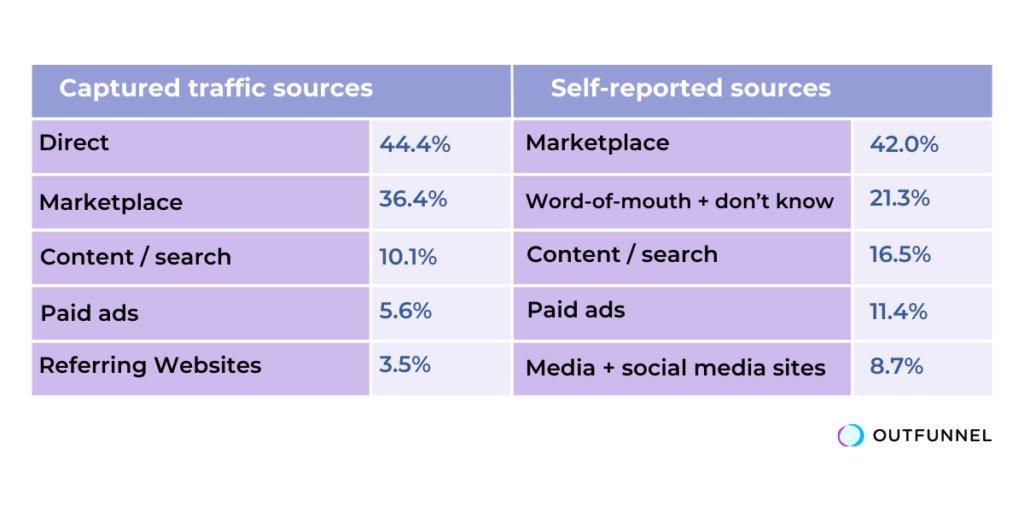
Here’s the move:
- Set up the basics — UTM tagging, CRM integration, and lead source tracking (Outfunnel can help to measure lead sources).
- Then ask every new lead how they found you — a simple form field works wonders.
Why both? Because we’ve seen that self-reported data often uncovers high-impact, low-visibility channels, while software-based tracking gives you consistency and scale. Combine them, and you get attribution that’s actually useful — not just a bunch of vanity metrics. See how we at Outfunnel track lead sources and how AI tools are on the rise.
And with AI getting better at connecting the dots across messy, multi-touch journeys, there’s even more value in feeding it high-quality input from both humans and systems.
So if you’re skipping either part, now’s the time to fix it. Track what you can. Ask what you can’t. And stop flying blind.
7. Deploy “inverse strategies” to get the most out of your email list
It’s well-known that your email list is an asset. Grow it, enjoy the benefits of it and don’t do anything stupid like use it all up in a weekend.
Conventional wisdom is to grow an email list. Smart marketers also invest in deleting people from their email lists. Namely, trimming people that haven’t engaged with emails for a long time.
This increases email deliverability and accuracy of your email reporting, as well as reduces your email budget.
Smart sales teams already target prospects that open and click emails. An inverse strategy to add on top is to go after negative email engagement signals like unsubscribes and bounces.
- Unsubscribing from a marketing email can mean : that (a) someone has opted for a competitive offering, or (b) found your email marketing uninteresting, or (c) found your latest email so convincing that they don’t need any new information. Whatever the reason, it’s a great reason to contact that prospect and find out.
- Email bounces usually mean that someone has changed their email address, and perhaps changed jobs. This means that you may want to (a) find out where they left to and initiate a new sales opportunity, or (b) find out who’s the replacement and make sure the work done so far wouldn’t go to waste.
📬 Next step: Build workflows that trigger actions based on unsubscribes and bounces.
8. The best long-term marketing bet is to invest in brand
Last but not least. Paid ads are getting more expensive and achieving worse results. Organic social media reach has been falling on multiple platforms. Search engines solve an increasing number of queries and competition is high.
Whatever you’re selling and whoever you’re selling to, the best long-term marketing bet is to invest in your brand. If your marketing plan is too acquisition and lead generation focused, your competitors will overtake you in a year or two.
Your marketing plan should include things like brand advertising, thought leadership and extreme top-of-funnel content, PR, events, community building, social media stunts, and the like. (See how we approach branding).
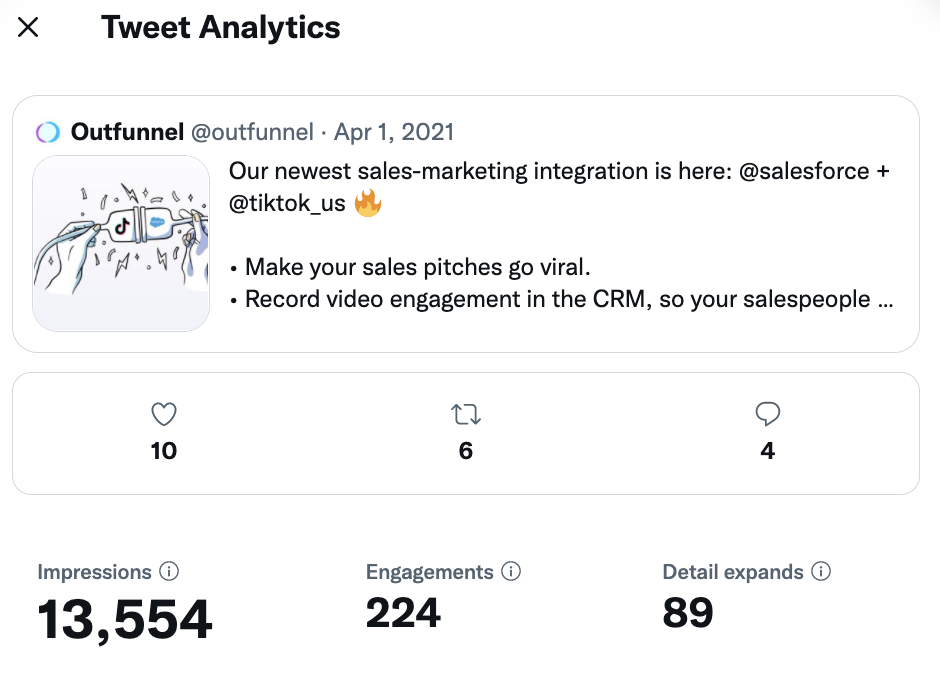
Yes, the short-term ROI on them is lower than for buying more Facebook ads right now, but you probably can’t afford to not think long term. A Facebook ad might get you a bunch of clicks today, but truly great marketing builds you a lasting reputation that compounds over time.
Marketing recommendations conclusion: when in doubt, go back to the basics
There’s always something new to pay attention to in marketing, and hopefully you got an idea for a tactic or a tool from this post.
I also hope I was able to illustrate why, in addition to following the new, it’s beneficial to deeply re-examine the basics.
It pays to treat customer data with respect, to keep user experience front-and-center, and to continuously invest in your brand.



